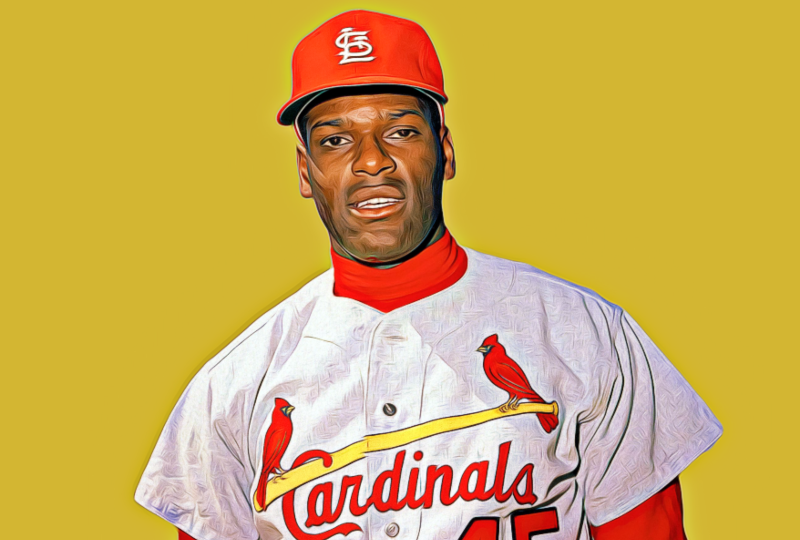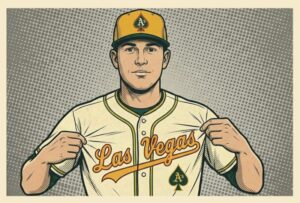Once, when he was pitching a game against the Giants in the mid-1960s, Bob Gibson watched as catcher Tim McCarver trotted out to the mound.
“What the fuck are you doing out here?” Gibson hollered.
“To hell with it,” McCarver said as he spun on his heel and returned to his position behind the plate.
“There was nothing I could tell Gibson when he was in the battle of competition,” McCarver remembered years later.
Gibson proved his ability to get it done on his own: he pitched 56 shutouts in a major league career that spanned from 1959 to 1975, including an incredible 13 in 1968, a season that proved to be his magnum opus.
The 84-year old Hall of Fame pitcher died on Friday, October 2, after a long struggle with pancreatic cancer.
Gibson was named the National League Most Valuable Player in 1968, and he won the Cy Young Award in both 1968 and 1970. He was an All-Star nine times, his irascible competitive personality helping forge the NL’s dominance in the All-Star Game in the 1960s. He was twice voted the MVP of the World Series, and he was the first african american to earn that honor.
Gibson was a remarkable athlete, a star basketball player at Creighton University. He briefly played professionally for the Harlem Globetrotters. He hit 24 career home runs, including five in a season twice. In 1970 he batted .303, while allowing opposing batters a meager .237 mark. Gibson won nine consecutive Gold Glove Awards, and he was a long-legged, quick baserunner. It’s not an exaggeration to say that “Gibby,” or “Hoot” (as his teammates called him), was the best athlete on his Cardinals teams, which he helped to two World Series titles.
In 1968, Gibson posted a 1.12 ERA, the lowest mark for a full season since 1906. It remains the lowest ERA ever posted by a starting pitcher in a full season since the end of the deadball era. That year, Gibby threw five straight shutouts in June, then three more in July. That summer he went a stretch of 11 starts where he pitched 99 innings and allowed only three earned runs. His efforts helped the Cardinals to their second consecutive pennant.
Twice, in 1964 and 1967, Gibson started and won Game Seven of the World Series, beating the Yankees and Red Sox. In Game One of the 1968 Series, Gibson shut out the Tigers, striking out 17 batters in one of the most dominant performances in the history of the Fall Classic.
For all his accomplishments in uniform, Gibson’s influence on the culture of baseball is often overlooked.
As he matriculated through the St. Louis farm system, Gibson encountered blatant racism. It was only a decade after Jackie Robinson integrated white baseball, and attitudes were slow to change. Gibson turned the other cheek most of the time, but when he arrived in St. Louis he emerged as a clubhouse leader, and he demanded that black and latino players be given the same respect as whites. As a result, the Cardinals became one of the most inclusive teams in the game in the 1960s, and their play on the field reflected their camaraderie. Gibson and other black players like Lou Brock and Curt Flood melded with latins like Orlando Cepeda and Julian Javier, as well as white players to form a great team.
Gibson never suffered fools and he had no time for nonsense. He dealt with the front office on his own terms, he stood up for young players and players of color. He insisted that his teammates be professionals. As much as any other black superstar, Gibson advanced the status of blacks in Major League Baseball during the turbulent 1960s.
In his autobiography. Gibson wrote:
“The Cardinals were the rare team that not only believed in each other but genuinely liked each other. … As a team, we would simply not tolerate any sort of festering rancor between us, personal or racial. … We bought our racial feelings out into the open and dealt with them. … I’m confident I had a lot to do with it, and so did guys like White and Flood. … (N)one of us gave an inch to racism. The white players respected that … and in turn we respected them.”
Gibson threw his only no-hitter in 1971, and in 1974 he became the second pitcher to strike out 3,000 batters, joining Walter Johnson. He retired a year later with 251 victories, and a 7-2 World Series record. He was immensely proud of winning two World Series titles and being part of the great Redbirds teams of the 1960s.
But after his playing career, when Gibson served as a coach on the staff of former teammate Joe Torre, he told people that his greatest accomplishment was bridging the racial divides that existed in baseball when he was a young player.
Gibson was elected to the Baseball Hall of Fame in 1981. He is the fourth Hall of Fame player to die in 2020, following Al Kaline, Tom Seaver, and Lou Brock.







